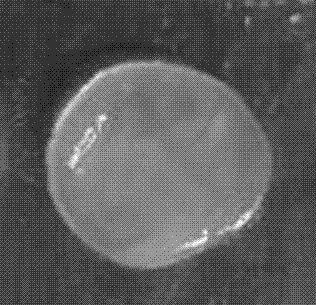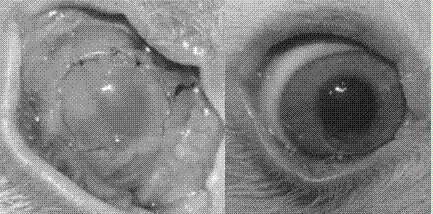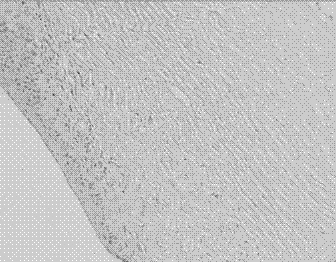A kind of preparation method of tissue engineered cornea
A tissue engineering and cornea technology, applied in the field of tissue engineering cornea construction, can solve problems such as treatment failure, rejection reaction, increase repair failure, etc., and achieve the effect of stable cell properties, high histocompatibility, and guaranteeing safety.
- Summary
- Abstract
- Description
- Claims
- Application Information
AI Technical Summary
Problems solved by technology
Method used
Image
Examples
preparation example Construction
[0038] The preparation method of the tissue-engineered cornea mainly includes animal-derived cornea pretreatment, separation of each layer of the cornea, decellularization, virus inactivation treatment, preparation of cell suspension and construction of the tissue-engineered cornea. The specific preparation process is as follows:
[0039] Step 1, animal-derived corneal pretreatment:
[0040] After the animal-derived cornea is taken, soak it in deionized water at 2-30 ℃ for 8-24 hours with added antibiotics. The natural cornea will swell due to water absorption, and its thickness can swell to 2-5 times the thickness. After the corneal epithelium The cell layer will fall off due to the swelling of the Descemet's membrane. At the same time, the use of antibiotics can effectively remove the bacteria in the corneal tissue and obtain sterile materials.
[0041] The antibiotic described in this step is one or a mixture of two or more of penicillins, cephalosporins, streptomycin, gent...
Embodiment 1
[0064] Example 1. Preparation of tissue-engineered cornea of porcine corneal scaffold composite cells.
[0065] Porcine corneas were collected and soaked in sterile deionized water mixed with gentamicin and streptomycin for 8 hours. The thickness of the pig cornea was swelled to twice the original thickness due to water absorption, and the epithelial cell layer fell off at the same time. Then place the above cornea on a microscopic table, cut the cornea into three layers with a corneal cutter, and the cut thickness of the Bowman's layer, stroma and Bowman's layer accounted for 5%, 90% and 5% of the total thickness respectively . The above tissue slices were then soaked repeatedly in 3M sodium chloride high-salt solution and deionized water for 15 cycles to remove cells, and at the same time irradiated with 15kGy for virus inactivation treatment. The tissue pieces were then placed in 85% glycerol and dehydrated at 25°C for later use.
[0066] At the same time, human corneal...
Embodiment 2
[0068] Example 2. Preparation of tissue-engineered cornea with bovine corneal scaffold composite cells.
[0069] The bovine cornea was collected and soaked in sterile deionized water added with penicillin for 24 hours. The thickness of the bovine cornea was swelled to 5 times of the initial thickness due to water absorption, and the epithelial cell layer fell off at the same time. Then the cornea was stratified by femtosecond laser, and it was divided into anterior descemet slices, stroma tissue slices and descemet tissue slices, whose thickness accounted for 10%, 80% and 10% of the total thickness. Soak the above tissue in 1M sodium hydroxide solution for 1 hour, wash it with deionized water, remove sodium hydroxide residue, remove cell structure, control the immunogenicity of the material, use 1% sodium hypochlorite virus inactivation treatment, 25kGy radiation Sterilize, and finally place in 95% glycerol at 30°C for dehydration until use.
[0070] At the same time, human c...
PUM
| Property | Measurement | Unit |
|---|---|---|
| transmittivity | aaaaa | aaaaa |
| transmittivity | aaaaa | aaaaa |
| transmittivity | aaaaa | aaaaa |
Abstract
Description
Claims
Application Information
 Login to View More
Login to View More - R&D
- Intellectual Property
- Life Sciences
- Materials
- Tech Scout
- Unparalleled Data Quality
- Higher Quality Content
- 60% Fewer Hallucinations
Browse by: Latest US Patents, China's latest patents, Technical Efficacy Thesaurus, Application Domain, Technology Topic, Popular Technical Reports.
© 2025 PatSnap. All rights reserved.Legal|Privacy policy|Modern Slavery Act Transparency Statement|Sitemap|About US| Contact US: help@patsnap.com



